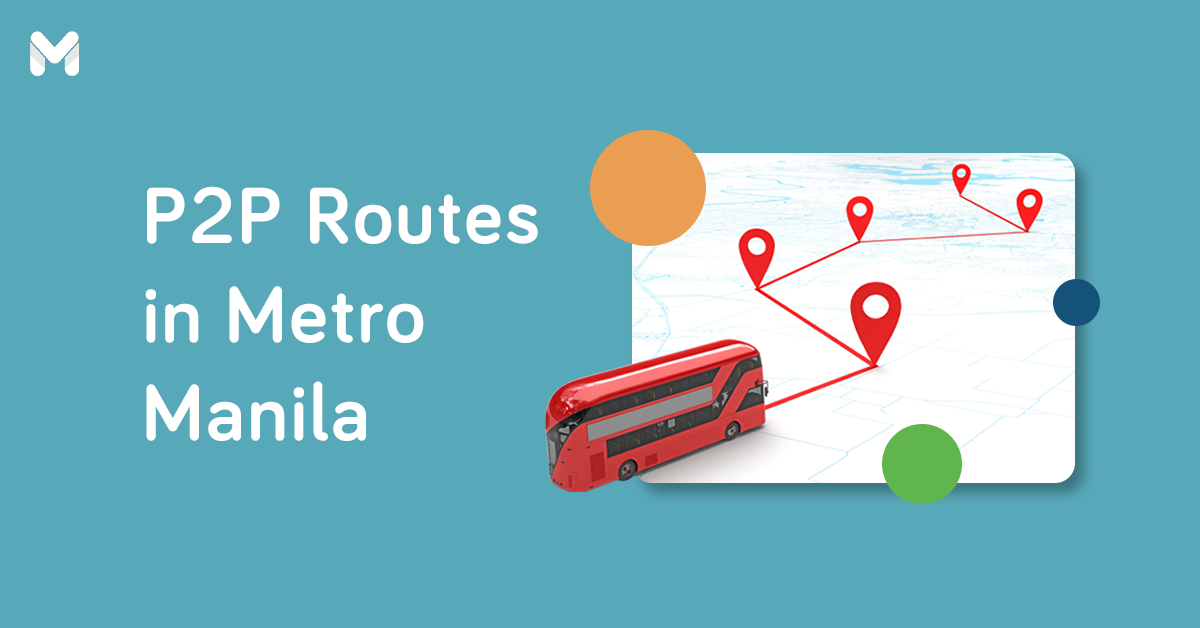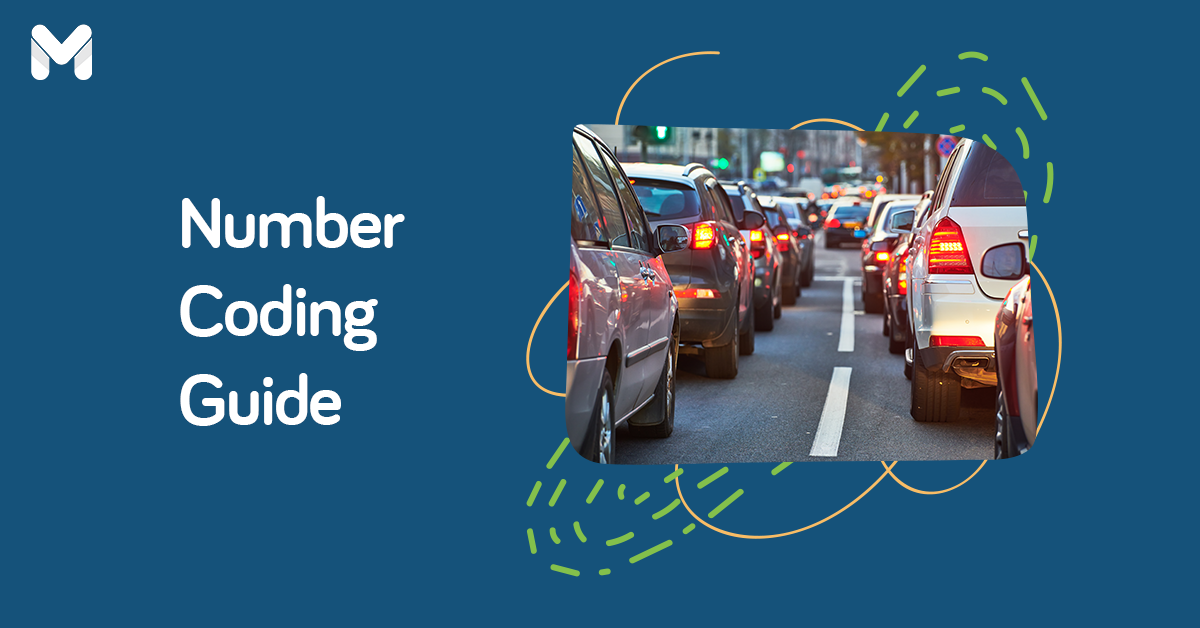Long and unbearable daily commutes to work have always been a fact of life in the Philippines, but it seems the COVID-19 pandemic made things worse. According to a Social Weather Stations (SWS) survey, 42% of Filipinos who report to the office say commuting is more difficult than before.[1]
As you hit the road, take note of the changes in your travels. When you know and acknowledge the different commuter problems, you may be able to come up with ways to make your trips lighter and more worthwhile. This article helps you do just that.
6 Common Commuter Problems in the Philippines
It’s important to understand the nature of the most common commuter problems, as it may provide new insights into how to tackle them. Take a look at these common problems of commuters in the Philippines.
Poor Public Transportation System

Photo: Ben Briones (PNA)
Commuting may be the cheapest way to reach your destination, but the public transportation system in the Philippines is the textbook definition of “underdeveloped.” An Asian Development Bank (ADB) study in 2012[2] identified the main challenges in transportation in the Philippines, then and now:
- Poor quality of road network
- Poor intermodal integration (the connection between two modes of transportation)
- Lack of quality urban transport systems
- Weak sector governance and institutional capacity
- Limited private investment in transport infrastructure
Presently, the government is working on solutions to address public transportation issues. These include the MRT-7, the Metro Manila Subway, and the North-South Commuter Railway (NSCR), among others. These projects are a glimmer of hope for Filipinos deprived of reliable transportation systems.
Read more: A Commuter’s Guide to LRT-1 Stations
Expensive Fares
Expensive fares are among the many commuter problems in the Philippines. These are attributed to soaring gas prices. Fare changes are a major issue since everyone is dealing with inflation.
As of writing, the base fare for public utility jeepneys has increased from ₱11 to ₱12. Modern public utility jeepneys increased their fare from ₱13 to ₱14.
Price increases also apply to buses. The base fare for ordinary city buses increased from ₱11 to ₱13. Meanwhile, air-conditioned city buses increased their fare from ₱13 to ₱15.
Traffic Jams
Many Filipinos have chosen to buy their own cars due to the lack of a reliable public transportation system in the Philippines. This, however, has an undeniable consequence: traffic jams.
According to a report by the insurance technology GoShorty, Manila has a 43% congestion level and loses 98 hours—equivalent to four days—to traffic yearly. This makes Manila the world’s eighth city with the longest hours spent in traffic.[3]
Traffic jams get worse on rainy days. On such occasions, commuting becomes even more unbearable.
If you regularly commute to or within Manila, traffic jams take a significant portion of your time that could have gone toward more productive pursuits—not that you need reminding.
Long Queues at Train and PUV Stations
This is another commuter problem that doesn’t only stress you out but also wastes your time. According to a survey by transport advocacy network The Passenger Forum, 79% of its respondents believe they wait too long to get a ride.[4]
It’s safe to say this issue is just a result of other issues, primarily the lack of vehicles that service commuters. Ninety-six percent of The Passenger Forum’s respondents say there aren’t enough jeepneys and buses to serve the commuting public.
Read more: Guide to BGC Bus Routes: How to Conveniently Commute to BGC
Lack of Walkable Areas for Pedestrians
Commuting problems in the Philippines also include the lack of decent and walkable areas for pedestrians. Sidewalks are typically narrow and footbridges unusually high, making them inaccessible to persons with disabilities (PWD) and senior citizens. On top of that, streets teem with trash.
The sad reality here is that most cities are designed for cars instead of people. If it’s any consolation, business districts, such as Makati and Taguig, provide walkable areas and parks where pedestrians can take a breather. Hopefully, other towns and cities will follow suit.
Crime
Snatchers, holduppers, and harassers seem to have become fixtures on the road, making them one of the worst commuting problems in the Philippines. Commuters often feel unsafe while commuting–not just because of the odds of getting into an accident, but also because of criminals lurking around the corner.
Crime, a result of poverty and unemployment, is a pervasive issue in the country. It’s the authorities’ responsibility to resolve it, but it doesn’t hurt to be on full alert whenever you’re commuting.
The Effects of Long Commutes to Work on Your Health

You may not realize it, but your daily commute to work can take a toll on your health in many ways. Here are a few negative effects to watch out for:
Exposure to Various Stressors
Commuter problems encompass a wide range of stressors. These include noises, traffic jams, long queues at the terminal, and unexpected events, such as the train or bus breaking down.
These stressors have consequences, such as being late to an important client meeting, missing your connecting train, and accumulating tardies in your work attendance. These repercussions can trigger anxiety and other negative emotional responses.
If you’re constantly dealing with stressors, your psychological health may suffer. The effects of chronic stress can also contribute to depression.[5]
Exposure to Air Pollution
Whether you’re riding a jeepney or simply walking on the sidewalk, you’re easily exposed to air pollution. If you’re already dealing with a pre-existing lung condition, the city’s murky air may make life difficult for you.
On the other hand, those with healthy lungs should still take precautions, as air pollution exposure results in pneumonia, bronchitis, dizziness, and nausea. Long-term effects include lung cancer, emphysema, and even heart disease.[6]
Control the amount of polluted air reaching your lungs by wearing face masks. If possible, avoid walking through high-traffic areas with lots of vehicles.
Lack of Sleep
According to a study in South Korea, workers with a commute time of more than 60 minutes or overtime work of 40 hours a week tend to sleep less on weekdays. This affects their activities the following day.[7]
Keep in mind that sleep deprivation may cause memory issues, weaken your immunity, increase your risk for high blood pressure, and make you gain weight.
It’s hard to get a good night’s rest when you wake up early to avoid traffic jams and arrive home late at night because of the rush hour.
How to Deal with Common Commuter Problems

For many commuters in the Philippines, there’s no way of getting used to the sorry state of the country’s public transportation system. Every day comes with a challenge that’ll test your patience.
While you may not be able to change the road’s status quo, you can always focus on what you can control.
Here are some tips to consider:
Leave Home Early
Combatting commuter problems by leaving your home early? That’s a classic tactic! People living within the metro often sacrifice sleep just to avoid the long lines at the train or bus station. On the other hand, you may want to wait a little after your clock-out time to avoid rush hour.
However, keep in mind that others follow the same strategy. They’ll also wake up early to go to the terminal, thus increasing your competition. You can get around this by joining a carpool with others who leave for work at the same time as you.
Know Your Destination
Meeting a client at a new location? Visiting a new city? Cut your travel time by learning more about your destination. Check your map and look at the schedules of jeeps, buses, and shuttle services.
You should also identify the MRT stations you’ll be boarding or alighting from ahead of time. While planning your trip, look for any alternative routes by asking those familiar with your destination.
Get a Beep Card
Get anything that can save time, no matter how small, on your daily commute to work. If you’re a frequent LRT and MRT rider, get a Beep card. You’ll be able to avoid long queues at the station’s ticketing booth. It’s also worth noting that you can use your Beep card on select city buses, such as BGC buses, EDSA buses, and point-to-point (P2P) buses.
Pack Some Light Snacks
Your daily commute to work can take a while, so you might get hungry (or perhaps hangry). If it’s not possible to enjoy a full meal before you leave home, pack light snacks you can eat while sitting in traffic. Quick pick-me-ups include sandwiches, protein bars, nuts, and even candies. Don’t forget to bring water to keep yourself hydrated.
Move Closer to Work
Unfortunately, you can only overcome some commuter problems by getting a new address. Moving closer to work sounds expensive, but imagine the time you’ll save. Moreover, it’ll give you peace of mind. At the end of a long work day, the last thing you want is to fight your way through long commuter lines and endure dreadful traffic on the road.
You can actually save money if your new place gives you access to cheaper food and transportation. You can also finally pursue your hobbies and side gigs with your new free time.
Try to be Productive

Photo: Commuters of Metro Manila (Facebook)
Traffic jams in Metro Manila are nothing short of horrible. If you live outside the city, you may find yourself spending at least four hours traveling back and forth. If you feel like you’re wasting a lot of time, here’s what you can do to maximize it:
- Read a book – Take advantage of the traffic by reading a chapter or two. But if paperbacks and hardcovers aren’t your things anymore, you can always listen to an audiobook.
- Listen to a podcast – Quell your boredom and stress while on the road with a podcast. You have a lot of options, from the entertaining antics of The Daily Show’s Trevor Noah to TED Talks’ inspiring content.
- Learn a new skill – From free YouTube videos to paid courses at MasterClass, there are a lot of ways to learn a new skill.
- Plan your day – Spend a few minutes of your commute productively by making a to-do list. That way, you’re ready once you arrive at work. You can complete menial tasks such as sending emails or even finishing reports.
- Do your grocery – You can do a lot of things as long as your smartphone is connected to the internet. Spend your weekend at home instead of at the supermarket by shopping for groceries online.
- Catch some Zs – Did you wake up early to catch that bus? If you happen to get a nice seat, go get some sleep—you deserve it!
Request Some Flexibility
Hybrid work setups are the way to go these days. As such, it’s easy to find managers who are open to giving employees some flexibility in their work schedules. If your company offers this arrangement, ask your manager if you can join another work shift (if there’s an existing one) to avoid traffic.
If your request isn’t granted and you continue to suffer from the horrible daily commute to work, maybe now’s the right time to move closer to work or find a job that’s closer to home. Better yet, find a fully remote job.
Final Thoughts
Long travel times are an unmoving status quo. What’s painful is the public doesn’t have much of a choice. While the responsibility to resolve this problem lies with the authorities, you can do some things to at least ease the burden. Learning the common commuter problems is the first step. When you know what you’re facing, you’ll be able to create practical strategies around it.
Sources:
- [1] SWS: Commuters Say Going to Work Much Harder Now Compared to Pre-Pandemic (Inquirer.net, 2021)
- [2] Fast Facts: State of Metro Manila’s Public Transport System (Rappler, 2019)
- [3] Manila is the World’s 8th City with Longest Hours Spent in Traffic – Study (The Philippine Star, 2022)
- [4] Commuter Group: Most Filipino Commuters Say Waiting Time Too Long, PUV Supply Lacking (The Philippine Star, 2022)
- [5] Stress and Depression (WebMD, 2021)
- [6] Air Pollution (National Geographic)
- [7] Long Commute Tie and Sleep Problems with Gender Difference in Work-Life Balance: A Cross-sectional Study of More Than 25,000 Workers (Science Direct, 2019)










